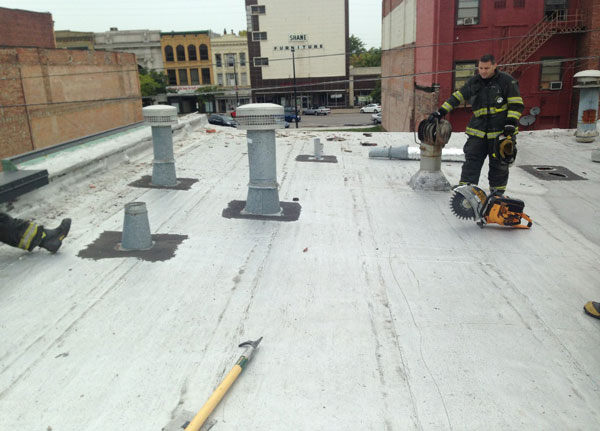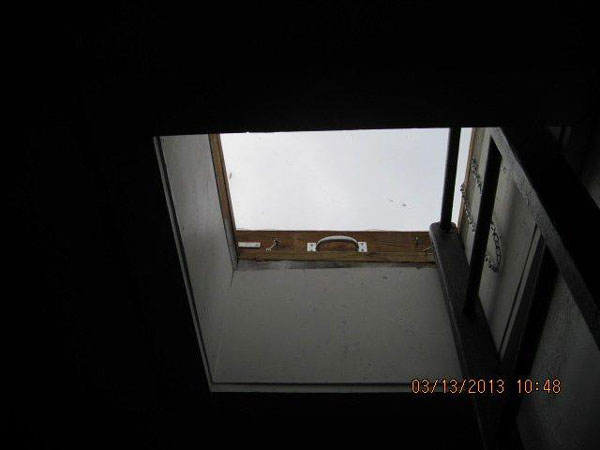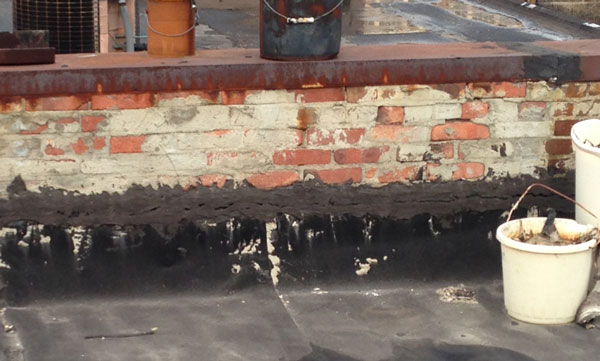By Joe Pronesti
Roof work may make or break firefighting operations in a “Main Street” building such as an attached taxpayer structure. One concern for the arriving incident commander (IC)–especially in a smaller department–may be whether crews can perform the job adequately. Proper ventilation operations on flat-roof structures can prevent flashover, prevent the spread of fire in cocklofts and attics, and make it easier and safer for firefighters to conduct search operations and locate and extinguish the fire.
Roof Size-Up and Assignments
Just like overall fireground size-up, roof size-up begins prior to the alarm. A great tool to get a look at your buildings, especially on your Main Street, is online satellite imagery. Taking a few hours from the recliners on a rainy afternoon can be just as productive than a three-hour PowerPoint presentation. Look at your buildings’ roof slopes, natural vent, scuttles, parapets, etc. A great drill that encompasses many training facets is to take your aerial or neighboring cities’ units out on a Saturday or Sunday and practice spotting and actually getting up on your roofs. Take your phones with you to take pictures!

Prior knowledge is the key for successful roof operations. Get up on your roofs and bring your camera, starting a Main Street file folder. On line GIS programs can help review your buildings and make for great rainy day training.
A key for firefighters going to the roof of an ordinary Type III structure is to take a broad rather than narrow focus on size-up. Most departments, especially small to mid-size ones, fight the majority of their fires in residential structures. If we take an honest look, I will be willing to bet that most of these fires are handled without any vertical ventilation. Your three-person truck company may have never opened a commercial roof under fire conditions. As an IC, are you confident they can perform this tactic flawlessly when fire does finally strike? Think again. Training and leadership prior to the event is the key that gives your department the best chance to succeed.
The officer needs to have assignments already in place prior to going to the roof. In most departments, staffing is going to be at a premium, but three spots must be filled: the operations, backup, and cut positions. Operations usually will consist of the officer. Safety must be the priority, and the officer must be constantly evaluating the stability and changing conditions of the roof. The officer cannot handle tasks such as cutting, which will narrow his focus on the roof. The firefighters on the roof need to bring the proper tools with them, including, at a minimum, working flashlights, a radio, a hook or a pike pole, a set of irons, and a thermal imaging camera (TIC), a wonderful tool to use on the roof and really anywhere in these buildings. As with any tool, it has limitations: if a roof is built up, the TIC may not always give an accurate reading of temperatures below.
ICs in small to mid-size departments must get personnel to the roof and remember that the initial three assignments discussed above are just the beginning. Cutting a hundred-year-old roof is going to be taxing and if you have any hopes of saving the building or the block, multiple companies are going to be needed. Get mutual aid truck companies or crews acting as truck companies in as early as possible.
Initial Roof Report
Once you have determined the roof is safe and the decision has been on vertical ventilation, keep these points in mind and report to command:
- Fire and smoke conditions, especially when they are not on side A, where the IC can see it.
- Exposure issues
- Presence and location of any holes, shafts, high parapets, or cornices. They may be fall hazards, fire spread hazards, or collapse hazards.
- Presence of concentrated loads or other heavy equipment on the roof. Heavy fire in the cockloft plus concentrated loads such as billboards and HVAC units require the utmost attention.
- What is the size and type of roof?
- Is any portion of the roof sagging?
- Are there ventilators or smoke vents, and are they issuing smoke and/or fire?
- Is fire showing through the roof?
- Is the roof composed of material that may be difficult to traverse?
- Are additional ladders needed because of steep pitch or parapets?
It is critical to always coordinate your ventilation with the interior crews and command.

When arriving on the roof, look at the obvious: Skylights, ventilators, etc. Also, check soil pipes for heat, since heavy heat on these soil pipes may indicate fire nearby.
Roof Pitch Quick Hits
The pitch of the roof (front to rear) allows the fire to spread rapidly to the higher cockloft area. The standard (flat) roof may have little or no pitch. If it is pitched, it will be from the front to the rear. As most flat-roof buildings slope slightly to allow for drainage, be aware that fire traveling in the cockloft will look to travel in an uphill direction; keep this in mind when planning the cut. These are called inverted roof systems and will be identified by 90° uprights attached to the main roof deck. They will (usually) diminish in size from front to rear.
The Scuttle Knock Out
When opening scuttles and natural openings into the top floor (i.e. scuttle or roof hatch), don’t forget to check to see if the scuttle returns or draft stops are open or walled in with drywall. If covered, take a tool and open this area up. This will expose the cockloft and allow smoke and heated gases to escape. This action may be overlooked if you’re in a hurry.

Do not forget to open up the draft stops or returns when opening scuttle holes. his will more than likely open up the cockloft, also.
Roof Decks
There are many types of roofs on taxpayers, but the most common is constructed of wood joists covered with either tongue-and-groove boards or plywood. The roof is then covered with combustible waterproofing material commonly called “tarpaper” or “built-up roofing” which may be several layers thick. The roof joists may be supported at approximately 20-foot intervals.
Crickets
No, we are not speaking about bugs. For a comprehensive discussion of this building construction feature and its associated hazards, read Colin Kelley’s article, “Roof Crickets: What’s Your Operation?”

Roof crickets vary in size but can contribute to rapid fire spread. Do not forget to open these up.
Roof Cuts
Once on the roof, and if you cannot see any obvious signs of fire, it is a good idea to quadrant off the building mentally. You can then estimate where the fire is and cut in that quadrant. Remember, you are on the roof of an old building; the chances of running into many years of tar is going to be great, and most small departments only have one saw. As a leader in your department, do you know if this saw has the “guts” to open up an old commercial roof? Do you know what your first-in mutual aid companies carry as far as ventilation tools and saws? The reoccurring theme here is to know prior to the event of one of these Main Street fires. If the decision to go to the roof is made, two saws are my personal recommendation. If you only have one or staffing only allows for one to go to the roof, remember that the tar will really bog down the saw and extra blades may be needed.
Cutting roofs is not as easy as one thinks. Training and practice prior to your fire event is the key.

Because of the age of these buildings, expect to enjoy tar cake. Are your saws up to the challenge? Do you or mutual aid companies have extra saw blades?
Prior Knowledge Is Crucial
In today’s fire service, we are all aware of the need to understand fire behavior and all the exciting information emerging from fire research. But if you are a well-rounded firefighter, building construction and fire spread in Type III Ordinary Construction must be well understood. Take the time to refresh yourself and those under your command.
 JOSEPH PRONESTI is a 26-year veteran of the Elyria (OH) Fire Department, where he is an assistant chief and shift commander. He is a graduate of the Ohio Fire Chiefs’ Executive Officer program and a lead instructor at the Cuyahoga (OH) County Community College Fire Academy. He is a contributor to fire service publications and sites, including Fire Engineering. He will be presenting a four-hour preconference classroom at FDIC 2016 titled “Main Street Tactics and Strategies: Are You Ready?” and will be presenting a Webcast on Main Street Fires on fireengineering.com. He can be reached at efdcaptain33@gmail.com
JOSEPH PRONESTI is a 26-year veteran of the Elyria (OH) Fire Department, where he is an assistant chief and shift commander. He is a graduate of the Ohio Fire Chiefs’ Executive Officer program and a lead instructor at the Cuyahoga (OH) County Community College Fire Academy. He is a contributor to fire service publications and sites, including Fire Engineering. He will be presenting a four-hour preconference classroom at FDIC 2016 titled “Main Street Tactics and Strategies: Are You Ready?” and will be presenting a Webcast on Main Street Fires on fireengineering.com. He can be reached at efdcaptain33@gmail.com
RELATED

